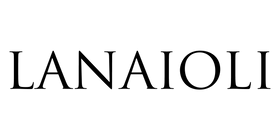Lanaioli: Our Commitment to Environmental Sustainability
Lanaioli was born as a luxury brand in the fashion sector with a vision towards high Quality standards of its productions.
The distinctive elements of our Brand are:
- the choice of yarn entirely processed in Italy;
- the manufacturing of products carried out by master artisans experienced in the sector;
- uncompromising quality.
Lanaioli: only natural yarns for greater sustainability
Luxury fashion is not only Quality of the raw materials and clothing items but also attention to eco-sustainable choices.
From the very beginning we started working to contribute to the need for a growing economy that respects the Planet and its natural resources.
The first step towards sustainability is to use only natural yarns, such as Cashmere and Merino Wool, to create our knitwear. These materials guarantee more durable garments, even if they are expensive compared to synthetic materials. This favors a production of Slow Fashion, where only what is necessary is created and purchased, reducing the typical waste of Fast Fashion.

Regenerated raw materials also in the high-end fashion sector
The first choice we made with our heart was to immediately use regenerated raw materials.
Since the launch of our brand, we have imagined a product line made with the finest yarn available on the market: the Regenerated Cashmere.
This yarn has undisputed quality properties: it provides comfort and allows maintaining body temperature unchanged in case of cold or heat. But not only that, cashmere is also a hypoallergenic product and does not irritate the skin and has breathable properties, making it wearable even in direct contact with the skin.
What is Cashmere and where does it come from
Cashmere is however produced in places very far from the companies that produce high-quality knitwear in Italy and beyond. Cashmere is obtained by combing the fleece of the Capra Hircus, which is native to the Kashmir region, between India and Pakistan. The per capita production of cashmere in this area is very limited, usually around only 200 grams per year. This limited supply on the textile market inevitably increases the price of cashmere
The Capra Hircus is now raised in different parts of the world, including small experimental farms in Italy. This geographical dispersion makes the product expensive, partly due to the long journeys the yarn must make to reach the textile production facilities. These long-distance transports contribute to additional CO2 emissions for the production of garments made with this exceptional yarn.
Regenerated Cashmere a sustainable and ethical choice in clothing production
For this reason, we opted for the use of Regenerated Cashmere or recycled. This is not a by-product of cashmere, but rather the result of the process of reusing garments already made entirely of cashmere.
Some companies are dedicated to recovering damaged, torn, or very worn sweaters that consumers discard and throw away. These companies collect such garments, sort them by color and material, and reuse them.
The Recovery Process of precious Cashmere
Thanks to a manual selection process, impurities and sweaters that are not 100% cashmere are removed. These sweaters are then shredded into small pieces and, through a carding process similar to that of cashmere obtained from the Capra Hircus, a new fiber is created.
This fiber obtained from recycling is reinforced through twisting, transforming it into new yarns of pure regenerated cashmere. These yarns are ready to be used in high-quality textile production.
Advantages of Regenerated Cashmere
This process allows a significant saving of water, electricity, fuel for transport, carbon dioxide emissions into the air, making the production of Cashmere decidedly sustainable and eco-friendly.



